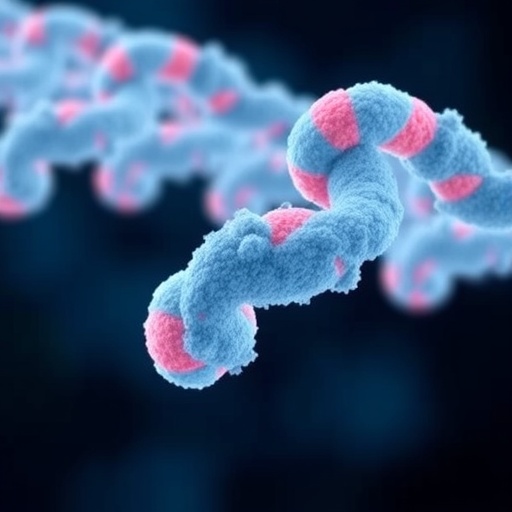Mitochondria are often referred to as the powerhouses of the cell, playing a crucial role in energy production and metabolic regulation. While they are best known for their involvement in adenosine triphosphate (ATP) synthesis through oxidative phosphorylation, their functionality is highly dependent on a diverse array of proteins. Mitochondria contain approximately 1,000 to 1,500 distinct proteins, a significant majority of which are encoded by the nuclear genome. These proteins traverse the cytosol, where they are synthesized before making their journey into the mitochondria. Interestingly, a small fraction of mitochondrial proteins is encoded by the mitochondrial DNA itself, with their synthesis occurring within the organelle.
The process of protein import into mitochondria is not merely an incidental event; rather, it is a meticulously orchestrated series of steps that are fundamental to mitochondrial biogenesis. Once these nucleus-encoded proteins are synthesized in the cytosol, they must navigate through the complex transport pathways leading into the mitochondria. This includes various stages, such as transport across the outer and inner mitochondrial membranes, followed by proper folding, assembly, and integration into mitochondrial structures. The intricacies of these processes are not just technicalities—they are critical for maintaining mitochondrial function and cellular health.
There are several specialized machineries that cooperate to facilitate the translocation of proteins across the mitochondrial membranes. The Translocase of the Outer Mitochondrial Membrane (TOM) and the Sorting and Assembly Machinery (SAM) are key players in the outer mitochondrial membrane. These complexes are responsible for recognizing, binding, and transporting proteins destined for the mitochondria. Once these proteins have successfully crossed the outer membrane, they encounter the Translocase of the Inner Mitochondrial Membrane (TIM) complexes, which guide further translocation. Each machinery is intricately designed to accommodate specific types of proteins, and their cooperative action ensures that the mitochondrial matrix and inner membrane are adequately populated with the proteins necessary for efficient mitochondrial function.
One of the most remarkable aspects of mitochondrial protein import is the presence of targeting and sorting signals embedded within the proteins themselves. These signals act like postal codes, directing proteins to their ultimate destination within the mitochondria. For proteins that need to enter the inner mitochondrial membrane, specific sequences may dictate how they are recognized by TIM complexes. The energy requirements of these processes are considerable, as they often involve ATP hydrolysis or the mitochondrial membrane potential to drive the translocation of proteins.
Recent advancements in our understanding of the protein structures involved in these transport machineries have shed light on how mitochondria ensure proper protein import. The crystal structures of these complexes reveal intricate arrangements that facilitate the recognition and translocation of proteins. Not only do these studies enhance our comprehension of the physical interactions between transport proteins and their substrates, but they also illuminate the evolutionary significance of these complex systems. The evolution of such specialized structures indicates the critical importance of mitochondrial integrity to cellular function.
Mislocalization of proteins can result in pathological conditions ranging from metabolic disorders to neurodegenerative diseases. Recent findings highlight the mechanisms by which proteins can shift in localization and how mislocalization can be corrected. Understanding these pathways is particularly relevant in the context of diseases associated with mitochondrial dysfunction, underscoring the need for ongoing research in this domain. It is clear that even minor disruptions in mitochondrial protein transport can significantly impact cell viability and overall health, necessitating a thorough exploration of the underlying mechanisms.
While many have focused on the role of mitochondria in energy metabolism, it is becoming increasingly apparent that these organelles are directly involved in various signaling pathways. Mitochondrial proteins are implicated in regulating apoptosis, calcium homeostasis, and even the immune response. The ability of mitochondria to adapt to cellular signals and alter protein import pathways demonstrates their dynamic nature and central role in cellular health. As researchers delve deeper into the multifaceted roles of mitochondria, new opportunities for therapeutic interventions in mitochondrial-related diseases may emerge.
The intricate machineries responsible for mitochondrial protein transport serve as a stunning example of cellular sophistication. These processes not only highlight the coordination required for maintaining mitochondrial integrity but also the extraordinary evolutionary journey that has led to the development of such intricate systems. As we continue to uncover the mechanisms governing mitochondrial protein transport, we may find new avenues for understanding metabolism, aging, and disease at a molecular level.
In conclusion, mitochondrial protein transport is a field that encapsulates the beauty and complexity of cellular life. Each new discovery adds a layer of understanding to the numerous roles mitochondria play beyond energy production, emphasizing their significance in health and disease. As technology advances and our molecular tools become more refined, we can expect groundbreaking revelations about mitochondrial function that will enrich our collective knowledge.
Continued research in mitochondrial biology is essential, as it has far-reaching implications for a wide array of health conditions. The advent of novel therapeutic strategies may hinge on our understanding of mitochondrial protein import and transport mechanisms, propelling us closer to potential treatments for conditions like Parkinson’s disease, diabetes, and heart disease, among others. As we peel back the layers of molecular complexity, the convergence of mitochondrial research and therapeutic development will undoubtedly shape the future of personalized medicine.
In the coming years, we can anticipate a surge in discoveries that will deepen our understanding of mitochondrial biology and further elucidate their critical roles in health and disease. With an increasing number of studies focusing on the structural and functional aspects of mitochondrial transport machineries, it is an exciting time to explore this vital area of cellular research. The unfolding narrative of mitochondria promises to reveal insights that are as enlightening as they are transformative.
Subject of Research: Mitochondrial protein transport and biogenesis
Article Title: Molecular machineries and pathways of mitochondrial protein transport
Article References:
Endo, T., Wiedemann, N. Molecular machineries and pathways of mitochondrial protein transport.
Nat Rev Mol Cell Biol 26, 848–867 (2025). https://doi.org/10.1038/s41580-025-00865-w
Image Credits: AI Generated
DOI: https://doi.org/10.1038/s41580-025-00865-w
Keywords: mitochondrial proteins, protein transport, mitochondrial biogenesis, TOM complex, TIM complex, SAM complex, protein import, cellular signaling, mitochondrial function, health and disease.
Tags: folding and assembly of mitochondrial proteinsmechanisms of protein integration into mitochondriamitochondrial biogenesis processesmitochondrial DNA protein synthesismitochondrial function and cellular healthmitochondrial membrane transport pathwaysmitochondrial protein diversity and functionmitochondrial protein transport mechanismsnuclear genome encoded proteinsoxidative phosphorylation and energy productionprotein import into mitochondriatransport pathways of cytosolic proteins





